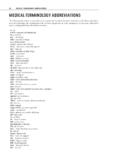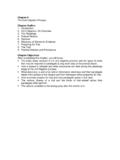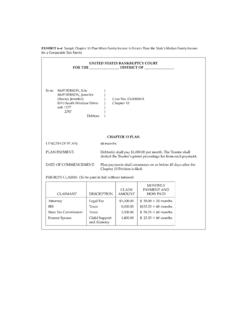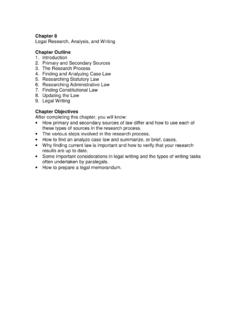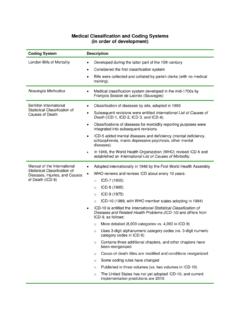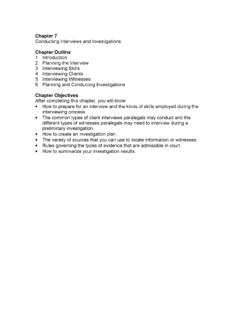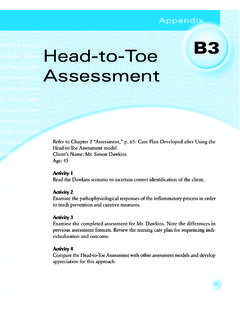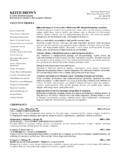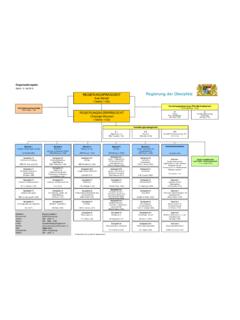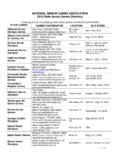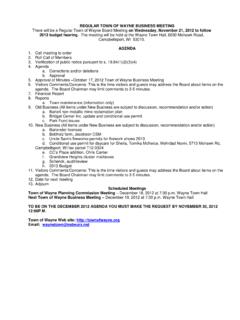Transcription of Lab Manual Solutions Industrial Control Electronics
1 Lab Manual Solutions Industrial Control Electronics : Devices, Systems, and Applications 3rd edition Terry bartelt Australia Canada Mexico Singapore Spain United Kingdom United States Experiment 1. Operational Amplifiers Experiment Questions 1. analog 2. linear 3. greater 4. 6, . 5. -5V. INPUTS. VOUT. V1 V2 (V). +4 +1 -5V VIN VOUT VIN VOUT. +2 +3 +5V + -1V + +1 0 -5V +2V + +4 +4 0V 0V 0V +5V. 0 +1 +5V + + -1V. +3 +2 -5V. Figure 1-2 b Figure 1-3 b&c Input Voltage Output Voltage V1 V2 V3 Measured Calculated +1V +1V +1V -3V -3V. +1V 1V 1V +1V +1V. +2V 1V 1V 0V 0V. 3V 1V +3V +1V +1V. +1V +2V 1V -2V -2V.
2 Figure 1-4b 1. Experiment 2. Schmitt Trigger Procedure Question Answer 1. No. Because the 7476 J-K flip-flop is negative edge triggered, and reacts only to positive-to-negative going signals that change abruptly. The rectified sine wave does not change fast enough. Step 5. Point 1..9. Vth = _____VDC. Vth + = _____VDC. Table 2-1. Step 7. Is the Flip-Flop Waveform At Point 1 At Point 2. Toggling (Yes, No). Circuit (a) NO. Circuit (b) YES. Table 2-2. Experiment Questions 1. - Convert electronic signals to square waves. - Perform NAND gate and Inverter logic functions. 2. D. 3. edge 4. Low, High 5.
3 Hysteresis 6. Because when sine waves are counted, they must be converted to square waves before being applied to a flip-flop. 2. Experiment 3. Magnitude Comparator Procedure Question Answer 1. If the high order bits are equal, then the output state is determined by comparing the low order bits. Step 2A. Input B Input A Outputs B3 B2 B1 B0 A3 A2 A1 A0 A<B A=B A>B. 0 0 0 0 0 0 0 0 0 1 0. 0 1 0 0 0 0 0 1 1 0 0. 1 0 0 1 1 0 0 0 1 0 0. 0 0 1 1 0 1 0 0 0 0 1. 0 0 0 1 1 0 0 1 0 0 1. Table 3-2. Step 3B. Input B Input A Expansion Inputs Outputs B3 B2 B1 B0 A3 A2 A1 A0 IA<B IA=B IA>B A<B A=B A>B. 0 0 0 0 1 1 1 1 1 0 0 0 0 1.
4 0 0 0 1 0 0 0 1 0 0 1 0 0 1. 0 1 1 0 0 1 1 0 0 1 0 0 1 0. 1 1 1 0 1 1 0 1 0 0 1 1 0 0. 0 1 0 1 1 1 1 0 0 1 0 0 0 1. Table 3-4. Experiment Questions 1. 1111. 2. Yes. By connecting a Low to the MSB of inputs A and B, and applying the three binary bits to the remaining inputs. 3. IA > B = 0. IA = B = 0. IA < B = 1. 4. 4. 5. When A is greater than B, or B is greater than A, the circuit would operate nor- mally. When A is equal to B, however, output A<B would incorrectly go High . instead of output A=B. 3. Experiment 4. SCR Phase Control Circuit Step 3 169 volts, yes Step 4 15 volts, yes Experiment Questions 1.
5 D. 2. B. 3. 169 15 = 154. 4. A. 5. B. No Power Half Power Full Power 6. B. to Load to Load to Load Input TP1. TP2. TP3. TP4. TP5. Across Lightbulb Figure 4-1. 4. Experiment 5. Photoresistor Step 1 Dark Resistance = 40K . Step 3 Ambient light voltage = 8V. Dark Voltage = +7V. Design Question Switch the position of R1 with that of the photoresistor. Experiment Questions 1. A. 2. B. 3. B. 4. B. 5. A. 5. Experiment 6. Optocoupler Step 1 1 Meg ohm Step 2 150 ohms Step 4. LED. On/Off Condition Ov Optoisolator (Transistor). Output Ov Step 5 B. Step 6 25 KHz Step 7 IC = If = 16mA. CTR 22%. Experiment Questions 1.
6 True 2. A. 3. A. 4. 25%. 5. C. 6. Experiment 7. Digital-to-Analog Converter Procedure Question Answers 1. A. 2. A. 3. 16 (24). 4. 1. 5. Eight different voltage levels. When an open is at the LSB input, a binary 1 is always applied to the LSB digital input lead of the D/A converter. This causes the D/A converter to produce the following counts: Desired Count Count with Pin 12 Open 0 1. 1 1. 2 3. 3 3. 4 5. 5 5. 6 7. 7 7. 8 9. 9 9. 10 11. 11 11. 12 13. 13 13. 14 15. 15 15. 7. 8 Experiment 7 Digital-to-Analog Converter 6. 32. The number of outputs is determined by multiplying 2 by the power of the num- ber of inputs applied to the digital input of the D/A converter (25).
7 Experiment Questions 1. 256. 2. 1. 3. - Change VREF applied to pin 14. - Change the resistor value connected to pin 14. - Change the RF resistor connected to pin 4. Experiment 8. Analog-to-Digital Converter Procedure Question Answer 1. They should be equal. Step 4. A/D Converter Test Results Input Output Measured Resolution Values Analog DB7 DB6 DB5 DB4 DB3 DB2 DB1 DB0 Resolution Voltage Total 0V 0 0 0 0 0 0 0 0 0V. 0 0 0 1 0 1 0 0 0 0 1 1 0 0 1 0 0 1 0 1 0 0 0 0 0 1 1 1 0 0 1 1 1 0 1 0 1 1 1 1 1 1 1 0 0 1 1 0 1 1 1 1 1 1 1 1 Table 8-1. Experiment Questions 1. 8. 2. 3. Low 4. 00110010. 9.
8 Experiment 9. 555 Clock Timer (Astable Multivibrator). Step 1. F out f=. (RA + 2RB) C (Frequency Out). RA ( ) RB ( ) C1( f) calculated (Hz) Measured (Hz) Chart Values (Hz). 47k 10k 1 21 15 25. 22k 10k 1 23 30. 22k 10k 343 278 260. 22k 545 435 475. 10k 10k 4800 4445 4000. Table 9-1. Experiment Questions 1. astable 2. Values of external components 3. Nothing. Just apply power and it runs by itself. 4. They provide pulses that are necessary to time and Control the proper sequenc- ing of all events throughout a computing system. 5. 450Hz 6. 900K ohms 10. Experiment 10. 555 Clock Pulse (Monostable One-Shot Multivibrator).
9 Step 3. RA ( ) C1 ( f) T = RAC1 calculated T measured Chart Value 1M 10 11 sec 11 sec 11 sec 470k 10 sec sec 5 sec 100k 50 sec sec 5 sec 10k 100 sec sec sec 470k 50 sec sec 25 sec Table 10-1. Experiment Questions 1. Low, High 2. It automatically does it by itself. 3. - By a mechanical push button - By another circuit 4. - Enter numbers into digital circuits - Empty numbers out of digital circuits - Producing time delay signals - Pulse stretchers - Bounceless switches - Reshaping ragged pulses 5. T = x 100K x 1ufd = 110 milliseconds 6. 900 ohms 11. Experiment 11. Integrator Operational Amplifier Step 4.
10 Input Output after Output after Output after Output after 5 seconds 10 seconds 15 seconds 20 seconds 1 VDC 8V 2 VDC 3 VDC Note: Voltages are all negative Table 11-1. Experiment Questions 1. yes 2. A. 3. faster 4. saturation 5. directly, directly 12. Experiment 12. Differentiator Operational Amplifier Step 8. Input is a .4 VPP Saw Tooth 300Hz 750Hz 1kHz 2kHz PPK. Square 5V P-P 12V P-P 16V P-P 20V P-P 25V P-P 27V P-P 27V P-P. Wave Outputs Table 12-1. Experiment Questions 1. directly 2. A. 3. C. 4. C. 5. 13. Experiment 13. Pressure Readings with a Manometer Step 3 B Primary Level = 0. Secondary Level = 0.

